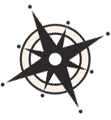Water levels on the Great Lakes are dynamic. They change in the shorter timeframe of seconds to days due primarily to wind patterns and waves and in the longer timeframe of months to years due to precipitation in the basin, evaporation, and flow through the rivers that connect the lakes. These resources can help people understand the variability of lake levels and how communities can become more resilient to extreme water levels.
Getting Started

This hour-long presentation by Adam Bechle, Coastal Engineering Outreach Specialist at the University of Wisconsin Sea Grant Institute, explains how fluctuations in rainfall, runoff, and evaporation cause the Great Lakes’ water levels and coastlines to vary.
Long-Term Water Level Observations and Forecasts
Short-Term Water Level Observations and Forecasts

Great Lakes Short-Term Water Level Observations
NOAA Center for Operational Oceanographic Products and Services (CO-OPS)
This website provides real-time and historic observations of short-term water levels and meteorological data at stations around the Great Lakes.
Assess Impacts

This interactive map visualizes the extent of rising and falling water levels along the shores of the Great Lakes from six feet above average lake levels to six feet below in one foot increments. It includes the ability to explore the impact of rising water levels on vulnerable populations and businesses.

Wisconsin Shoreline Inventory and Oblique Photo Viewer Map
Association of State Floodplain Managers
Explore how the Great Lakes coasts of Wisconsin have changed since 1976 by viewing beach and bluff conditions, oblique photos and coastal erosion rates.
Adapt to Changing Water Levels

Adapting to a Changing Coast – Options and Resources for Lake Michigan Property Owners
Wisconsin Sea Grant
This publication identifies 16 options across 5 themes to help coastal property owners adapt to changing water levels and storms on Lake Michigan.

Adapting to a Changing Coast: Options and Resources for Local Officials in Southeastern Wisconsin Coastal Communities
Wisconsin Sea Grant
This publication identifies 28 options across 4 themes to help local government officials address changing water levels and storms on Lake Michigan.

This guidebook describes different types of nature-based shoreline techniques suitable for the Great Lakes and shares case studies of their implementation.

Living on the Coast
Wisconsin Sea Grant and the U.S. Army Corps of Engineers-Detroit District
A guidebook describing natural coastal processes and strategies to manage risk to coastal properties.

Coastal Processes Manual: How to Estimate the Conditions of Risk to Coastal Property from Extreme Lake Levels, Storms, and Erosion in the Great Lakes Basin
Wisconsin Sea Grant
The second edition of this manual, published in 1998, provides step-by-step instructions on how to estimate risk to Great Lakes coastal property from extreme lake levels, storms and erosion. A third edition is in development.
Networks Building Resilience to Coastal Hazards

This group with members from state, regional and local government agencies, academic institutions and non-government organizations meets several times a year to discuss coastal natural hazards issues, share information, and collaborate on research and outreach projects.

Coastal Hazards of Superior Community of Practice (CHAOS)
NOAA Partners in Minnesota and Wisconsin
This group provides a platform for engaging local community leaders, managers, researchers, and communicators with a shared concern about coastal hazards in the western Lake Superior region.

Collaborative Action for Lake Michigan Coastal Resilience (CALM)
Wisconsin Coastal Management Program and partners
This network works to sustain, strengthen, and connect existing regional coastal resilience networks to expand collaboration across Wisconsin’s entire Lake Michigan coastline.

Northeast Wisconsin Coastal Resilience Study
Bay-Lake Regional Planning Commission, Wisconsin Sea Grant and the Wisconsin Coastal Management Program
This resource hub shares information about resilience to coastal hazards in northeast Wisconsin, focusing on coastal communities in Sheboygan, Manitowoc, and Kewaunee counties.
Lorem ipsum dolor sit amet, consectetur adipiscing elit. Ut elit tellus, luctus nec ullamcorper mattis, pulvinar dapibus leo.
